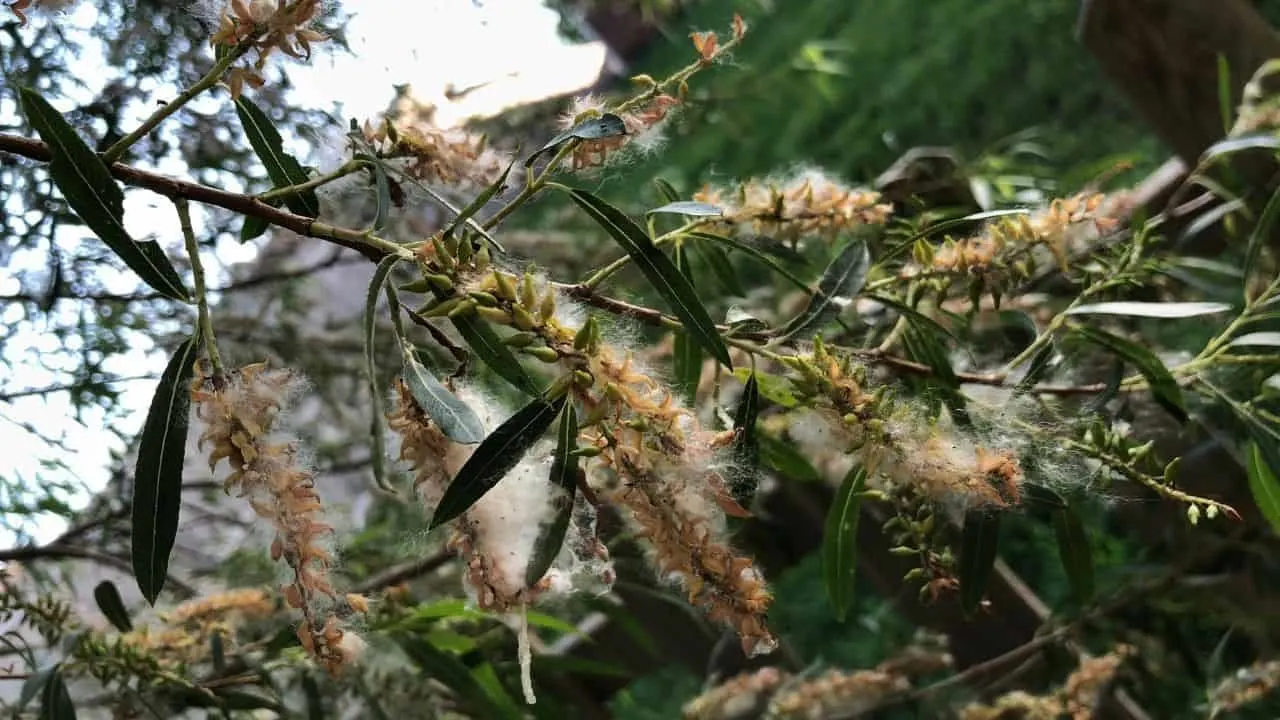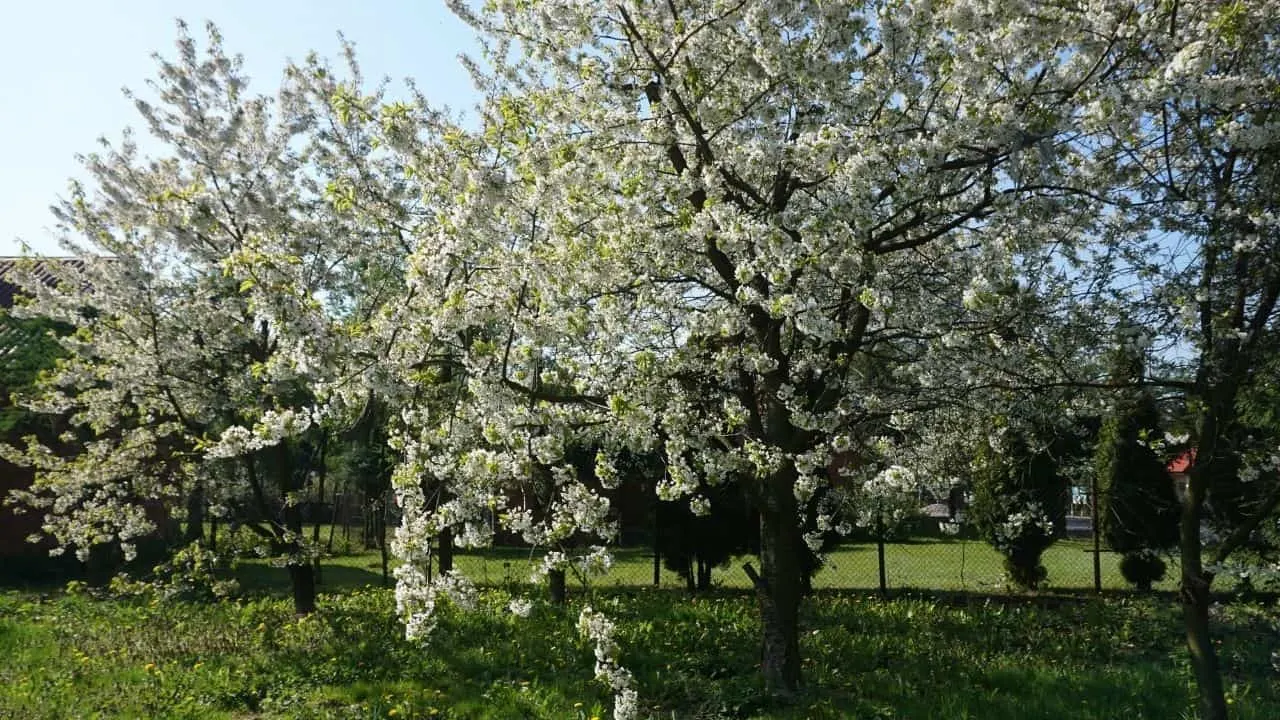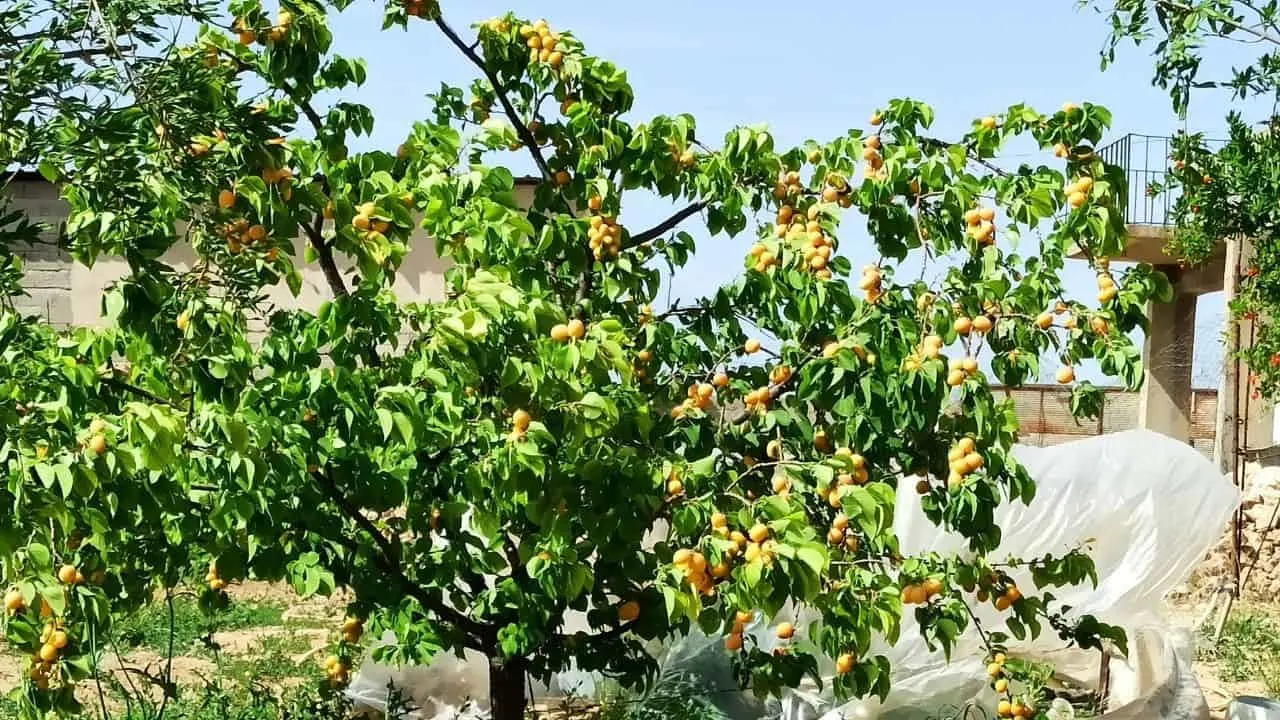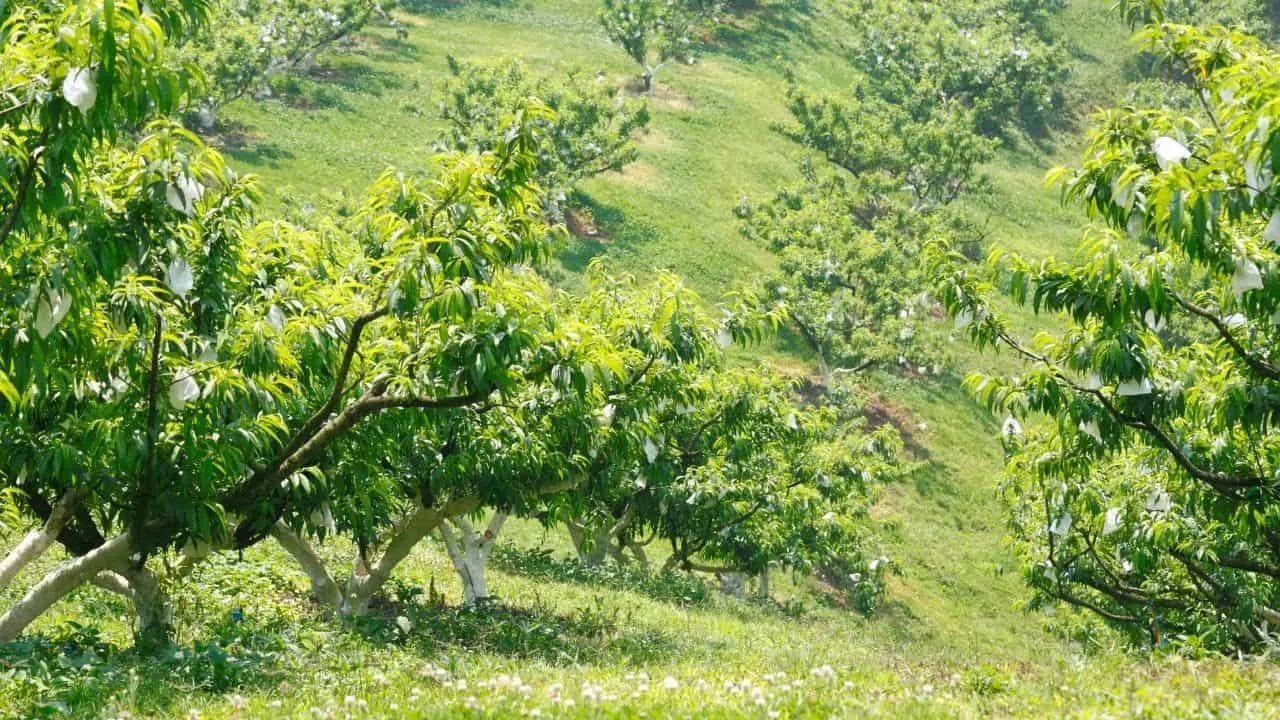If you are cultivating and planting trees in Kansas, choose native species that will thrive in the climate.
For this region, there are numerous options- including fruit trees– that grow hardy and healthy in this US grow zone.
Want to know more about the best trees to plant in Kansas?
Table of Contents
What are the best trees to plant in Kansas?
One of the best trees to plant in Kansas is also the official state tree, the Eastern Cottonwood. These trees grow fast and large, around 70 feet tall with a 70-foot spread, in this climate. Other hardy options in Kansas include fruit trees, particularly apple, apricot, and peach trees.
Eastern Cottonwood Trees

Native Eastern Cottonwood trees are perhaps the best trees to plant in Kansas, and coincidentally, the Eastern Cottonwood — or Eastern Poplar, as it is known — is the official Kansas state tree.
These trees are massive, often growing to towering heights of 100 feet in some conditions, though more often they are around 70 feet tall, on average.
The Eastern Cottonwood grows quickly in moist environments with a vast spread of between 50 and 70 feet, typically.
These trees are usually cultivated for furniture manufacturing, as well as for pallet production and pulp. These trees also are an easy fuelwood source, though they burn fast and low.
In nature, the Cottonwood provides food for whitetail and mule deer who like to nibble on the foliage and limbs of the trees. These vast trees also serve as a protective barrier for wildlife seeking refuge, including deer and turkeys.
Consider planting Eastern Cottonwoods as windbreaks on your property, but keep at least 25 feet from other plants or risk overcrowding. These trees like sandy soil but do well in soil that retains moisture and is spaced a good distance apart from others.
Unfortunately, Eastern cottonwoods are plagued by a variety of pests and insects. This can be devastating to immature saplings, so maintain vigilance in keeping pests at bay, especially when your trees are young.
Apple Trees

There are many delicious varieties of apples that thrive and grow in Kansas, including the popular Gala, Empire, Delicious Red, Granny Smith, and Delicious Golden apple varieties.
Cross-fertilize two different types of apple trees in your garden or orchard for the best apples and plan on starting out with young one-year-old saplings for optimal results.
Don’t plant your apple trees too close to rivers or streams and keep them away from trees that can block their exposure to sunlight.
Apple trees that receive full natural sunlight produce the best harvest. Plan on pruning your apple trees regularly to keep them hardy and healthy.
Apricot Trees

Ever wonder where the best tasting apricots come from? If you live in Kansas, they could be from your own backyard!
Interestingly, apricot trees only yield their fruit once every five years or longer- sometimes they only produce apricots every ten years!
Apricot trees are lovely with lush foliage and intriguing blossoms — plus, they require very little-to-no maintenance. These trees are appealing to pests, however, so it is recommended that growers use an insecticide to deter peach tree borers from moving in and taking over.
Apricot trees will require frequent watering, particularly in hot weather. Apricot trees are self-pollinating, so you can grow just one — or a whole orchard — if you wish.
Peach Trees

Many different peach trees thrive in Kansas, including Red-haven, Harken, and Reliance varieties. These trees have the best chance of success at growing when you plant saplings that are at least one year old.
Soak the root ball of the young tree in water for a few hours first, before planting in sandy soil that has good drainage.
Since peach trees are self-pollinating, growers can plant a single tree if desired.
Peach trees will need to be pruned regularly and this includes picking early peaches to allow the tree to yield peaches that taste better in-season.
If you want your peach trees to grow healthy and have an abundant harvest, give them fertilizers designed for a peach tree.
Also, you might want to learn about the reasons behind red spots on peach tree leaves, so better read on them to address the issues causing it.
Frequently Asked Questions about What Trees are Best to Plant in Kansas
Can you grow palm trees in Kansas?
It is too cold in Kansas for palm trees to thrive and prosper. Wintertime can be cold, though it is hot in summer with varying humidity levels depending on where you are. Planting Eastern Cottonwood and native fruit trees will yield better results for growers.
What is the largest tree in Kansas?
The Eastern Cottonwood is the biggest tree in Kansas, and it also happens to be the official state tree. These trees typically grow 70-feet tall with a spread up to 70-feet, though some trees have been reported as reaching 100 feet in height. This tree is sometimes called the Eastern Poplar.
Where should you grow Eastern Cottonwood trees?
Eastern Cottonwoods need well-draining soil that is damp, so they often thrive near rivers and streams in silt or sand. Eastern Cottonwood trees are planted primarily for making furniture, as it is a lovely hardwood.
What fruit trees grow best in Kansas weather?
In Kansas, you will find that apple, apricot, and peach trees thrive. You may also find success growing plums, grapes, cherries, and nectarines- but it requires time and effort in this climate. Bramble berries, like raspberries and blackberries, do well in Kansas soil that is well-drained, too.
Conclusion
Use this information when planning to plant trees on your property in the state of Kansas.
Know that native species of apple, peach, and apricot trees will thrive and grow in this climate, as will the official state tree, the tall and mighty Eastern Cottonwood.

Daniel has been a plant enthusiast for over 20 years. He owns hundreds of houseplants and prepares for the chili growing seasons yearly with great anticipation. His favorite plants are plant species in the Araceae family, such as Monstera, Philodendron, and Anthurium. He also loves gardening and is growing hot peppers, tomatoes, and many more vegetables.


